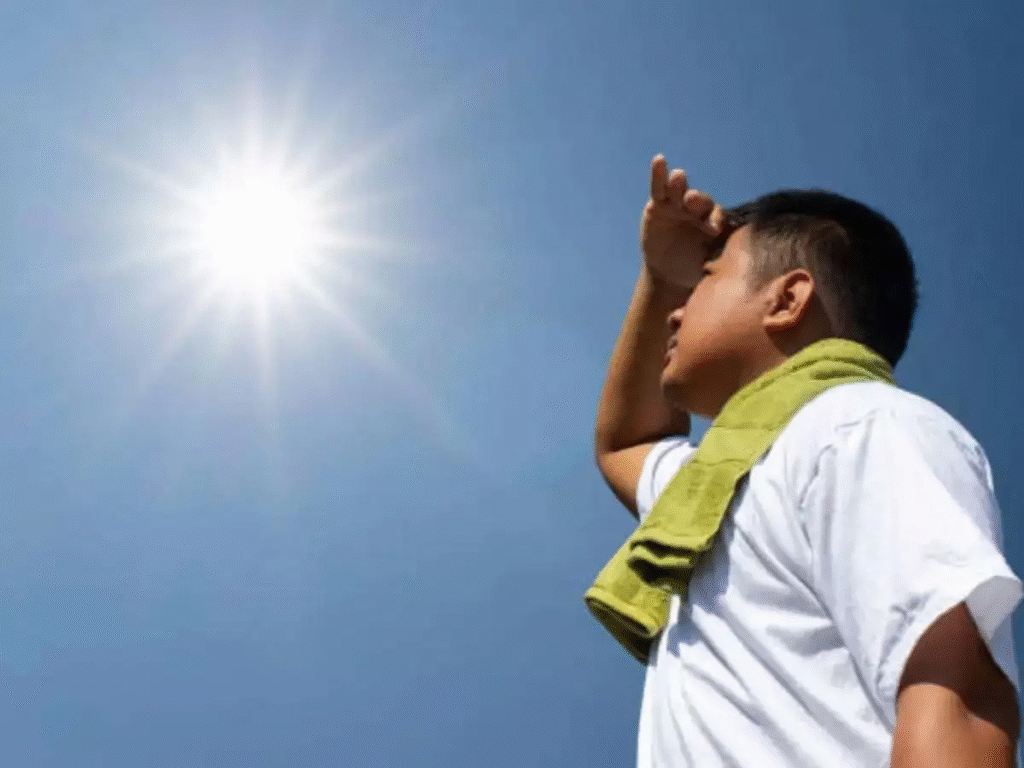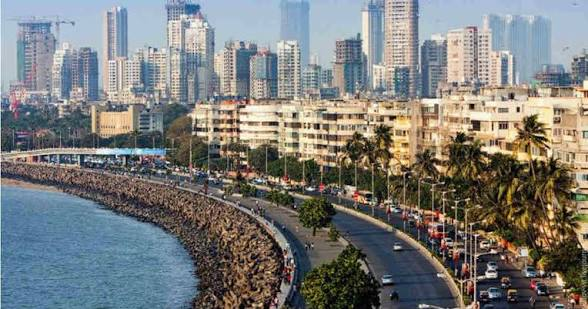Mumbai weather updates: Temperatures soar past 34°C as the city experiences a mix of dry heat and high humidity, impacting daily life and comfort levels
Mumbai Sizzles: Temperatures Soar Past 34 °C amid Dry, Humid Conditions
Mumbai, [Date] — As the city trudges through another sweltering day, Mumbaikars are grappling with soaring temperatures, oppressive humidity, and dry heat that show little sign of abating. With the thermometer crossing the 34‑degree Celsius mark in many areas, the combination of heat and humidity is making everyday life more challenging for residents, especially those working outdoors, vulnerable populations, and commuters.
Heat & Humidity: A Lethal Mix
According to recent observations, several parts of Mumbai — particularly in the suburbs — reported daytime maximums exceeding 34 °C. While precise readings vary by locality, hotspots near Santacruz, Andheri, Goregaon, and eastern suburbs have been among the worst‑hit zones. (For reference: Santacruz earlier recorded ~ 35 °C on certain summer days. Mid-day)
Humidity is compounding the effect: the relative humidity levels in many parts of the city have hovered between 70 % and 90 %, making the heat feel heavier and more exhausting. The term “wet bulb temperature” — which factors humidity into how hot it feels — is frequently cited by meteorologists as a better measure of discomfort. In the current conditions, the apparent temperature (how it feels) is often several degrees higher than the actual reading.
Moreover, the usual maritime relief from sea breezes is being muted by easterly winds and the lack of pressure gradients, meaning the cooler air from the sea is less able to penetrate inland — effectively trapping the heat in the city’s core.
What’s Driving the Heat Spell?

Several meteorological and seasonal factors are contributing to this high‑temperature, humid stretch:
- Withdrawal of Monsoon
The southwest monsoon officially withdrew from certain parts of Maharashtra (including Mumbai) on October 10, 2025. With the monsoon’s retreat, the moderating rains and cloud cover have reduced, leading to more clear skies and stronger solar heating during daylight hours. - Clear Skies & Intense Sunlight
With less cloud cover, solar radiation is more direct and longer in duration through the day. Especially from late morning to midafternoon, the sun’s intensity contributes heavily to surface heating in built-up urban areas. - Stagnant Air / Weak Ventilation
The atmospheric circulation in the region is relatively weak, causing stagnation. Without significant winds to disperse the heat and humidity, residential and commercial zones trap heat, especially in narrow lanes and congested areas. - Urban Heat Island Effect
Mumbai’s dense infrastructure — roads, concrete, buildings, limited green cover — absorbs and retains heat. At night, the city struggles to cool down fully. This effect makes inner parts of the city noticeably hotter than coastal or open zones. - Moist Air Inflow
Residual moisture and moisture influx from nearby regions (e.g., leftover monsoonal influence or oceanic humidity) keep the air heavy, making heat less bearable. The result: even though daytime skies may be dry, the sticky air lingers.
On the Ground: What Residents Are Experiencing
Daily Life & Commuting
For many Mumbaikars, the heat has turned routines into challenges:
- Commuters report that waiting for buses, traveling in non-AC transport, or walking to transit hubs is especially draining. The absence of cooling sea breezes in many parts exacerbates the discomfort.
- Street vendors, construction workers, traffic police, and outdoor laborers are particularly vulnerable — many are taking more frequent breaks, sipping water more often, or shifting schedules to avoid peak sun hours.
- Public spaces & markets see lower foot traffic during the afternoon, with people preferring to stay indoors, under shade, or in air-conditioned settings until temperatures moderate.
Health & Wellness Concerns
With elevated temperatures and humidity, health risks rise, especially for the elderly, children, those with respiratory or cardiovascular conditions, and individuals with limited access to cooling infrastructures.
Common heat‑related symptoms being reported include:
- Excessive sweating
- Dizziness or lightheadedness
- Headaches
- Dehydration (dry mouth, reduced urine output)
- Fatigue or lethargy
- Difficulty sleeping at night
Local clinics and hospitals are reportedly seeing a rise in cases of heat exhaustion and dehydration. Many doctors are advising residents to stay indoors during peak afternoon hours, drink ample water (electrolyte solutions where needed), and avoid exposure to direct sunlight.
Impact on Utilities & Infrastructure
- Electricity Load & Power Usage: With increased reliance on fans, air conditioners, coolers, and refrigerators, the demand on Mumbai’s power grid is higher — straining supply during peak demand periods.
- Water Consumption: More people are drawing water for hydration and cooling, raising concerns about local water supply systems, particularly in areas with already stressed resources.
- Public Services: Ambulances, public health outreach, cooling centers (if available), and municipal services could see higher demand. Additionally, traffic congestion may worsen as drivers avoid exposure by cranking AC, which increases vehicle energy use.
Short‑Term Forecast & Outlook
The India Meteorological Department (IMD) and other weather services suggest that Mumbai may not see immediate relief:
- While some forecasts indicate light showers or patchy rain in certain coastal or eastern suburbs (e.g. Colaba, Vikhroli, Ghatkopar), these are unlikely to bring sustained drops in temperature.
- Over the coming days, daytime highs may hover in the 32‑35 °C range, while nights remain warm, pushing up discomfort because of poor cooling.
- Humidity is expected to stay moderate to high during mornings and evenings, which maintains the oppressive “sticky” feel.
- Occasional thunderstorms or brief showers may offer short respite locally, but widespread or prolonged cooling is not expected immediately.
Coping Strategies: How to Stay Safe & Comfortable

Here are some practical recommendations for residents during this heat spell:
- Hydration & Nutrition
- Drink sufficient water regularly, even before feeling thirsty.
- Include electrolytes (oral rehydration solutions or drinks like buttermilk, coconut water) especially if sweating heavily.
- Eat light, hydrating foods — fruits (watermelon, cucumber), salads, soups, etc.
- Limit Outdoor Exposure
- Avoid strenuous activity between 11 AM and 4 PM, when solar intensity peaks.
- If outdoor work is unavoidable, break tasks into smaller segments, rest in shade, and use protective wear (hats, umbrellas, lightweight long sleeves).
- Dress Smart
- Wear breathable, light-colored fabrics like cotton or moisture-wicking blends.
- Use hats, caps, or cloth coverings to shield head and neck from direct sun.
- Indoor Cooling & Ventilation
- Use fans, air conditioners, evaporative coolers, or cross-ventilation in homes.
- Keep windows open when nighttime air is cooler, but close curtains or blinds during day to reduce solar heat gain.
- Place potted plants or water-filled trays indoors to help cool ambient air (evaporative cooling).
- Sleep Environment
- Use light bed linens and avoid heavy covers.
- Sleep in the coolest part of your home; consider using fans near floors or foot of bed.
- A damp towel or sheet hung across open windows can help cool incoming air slightly.
- Be Heat‑Smart During Transit
- Use shaded routes, carry water and a spray bottle (with misting function) if commuting on foot.
- Prefer public transit with AC or shaded shelters at bus stops.
- Avoid waiting alone in direct sunlight at stops; arrive just before departure where possible.
- Check on Vulnerable People
- Regularly monitor elderly family members, neighbours, or those with health vulnerabilities.
- Ensure they have access to cool spaces, hydration, and assistance if needed.
- Stay Informed
- Track local weather updates, heat advisories, and alerts (IMD or municipal updates).
- Be aware of symptoms of heatstroke and seek medical help promptly if signs worsen (e.g. confusion, high fever, unconsciousness).
Long-Term Implications & Observations
Climate Shifts & Urban Resilience
The frequency of heat spells and unusually high temperatures in coastal cities like Mumbai reflects broader climate change trends. As global warming intensifies, such episodes may become more common and severe. Mumbai’s climate is tropical, with a mix of wet and dry seasons, and the city is vulnerable to extreme weather fluctuations.
To build resilience, the city may need to invest more in:
- Urban greening & tree cover (to reduce heat islands)
- Cool roofing & reflective building materials
- Water-sensitive urban design (shading, ponds, water bodies)
- Heat action plans, early warning systems, public cooling shelters
- Infrastructure upgrades for power, water, drainage, and health services
Health System Preparedness
Local health agencies must be prepared to handle surges in heat-related ailments. Mobile medical units, public awareness campaigns, and better accessibility to cooling zones become essential during heat spells.
Public Behavior & Lifestyle Adjustments
Residents may increasingly adapt daily schedules — shifting heavy work or travel to early mornings or late evenings — or invest in cooling infrastructure. Community-level planning, such as shaded bus stops or public fountains, could play a role in managing heat stress.
Voices from Mumbai
- “By midday, the air feels suffocating — even walking across a street feels like a workout.” — a commuter from Andheri
- “We’ve started taking mid‑day breaks and rescheduling tasks to avoid the worst hours.” — a construction worker in Ghatkopar
- “Our electricity bills are skyrocketing. We dread the afternoon, especially with a toddler at home.” — a resident in Powai
- “I worry for my elderly parents — they’re more vulnerable. We’ve placed fans and coolers strategically, but it’s still a struggle.” — a caregiver in Chembur
These voices underscore the everyday realities behind the meteorological data.
Also Read : Maharashtra Minister Nitesh Rane Visits Sweden To Strengthen Maritime & Green Technology Ties















 Categories
Categories









